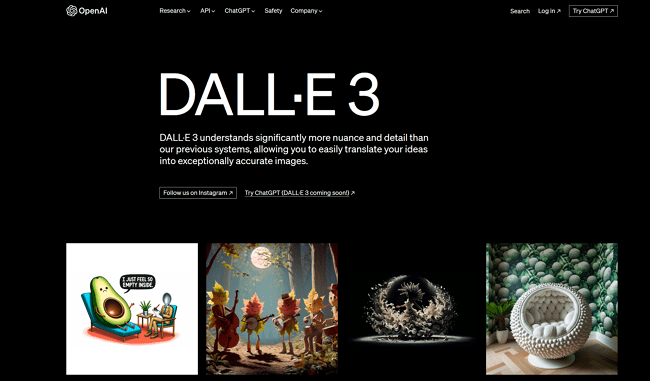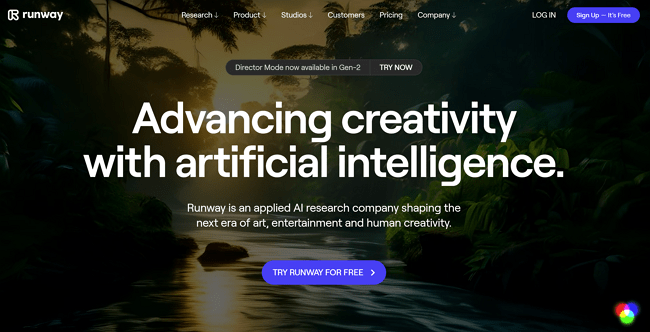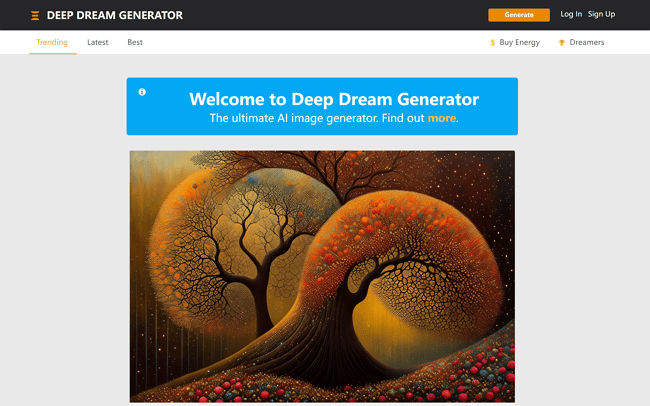2024 Лучшие бесплатные Deepnude AI: AI обнаженные
Ниже представлен список лучших AI-приложений для создания ню, которые стоит проверить!

The artistic and technological realms have seen an impressive evolution in recent years, with AI playing a pivotal role in various sectors. Particularly in image creation, AI prompt generators have emerged as invaluable tools for artists, designers, and enthusiasts. These tools are essentially software or platforms that leverage artificial intelligence to turn textual prompts into stunning visual representations. If you've ever been curious about these tools or wanted to enhance your image creation skills, this article is for you. Let’s deep into the top 10 AI prompt generators for image creation.

One of the most remarkable and widely recognized AI prompt generators, DALL-E by OpenAI, has made headlines globally. It has an uncanny ability to produce intricate and sometimes surreal illustrations based purely on textual prompts. Its models are trained using GPT-3, ensuring the high quality of outputs.
Features: Innovatively uses GPT-3-like architecture to generate images from textual descriptions, providing a seamless blend between natural language understanding and image generation.
Pros:
● High-quality image creation.
● Backed by robust research and technology.
Cons:
● Has a fixed resolution of output images.
● Limited customization options beyond textual prompts.
DeepArt uses deep neural networks to convert your photos into artworks. While it initially gained popularity for its style transfer capabilities, its ability to create unique images based on simple textual prompts has not gone unnoticed.
Features: Primarily focused on style transfer, using neural networks to apply artistic styles from one image to the content of another.
Pros:
● User-friendly, especially for beginners.
● Decent quality in style transfer.
Cons:
● Resulting image quality might be inconsistent.
● Limited to the creativity and variety of provided styles.

Artbreeder merges genetic algorithms with deep learning. Users can blend images or use textual prompts to birth unique, evolving creations. It's especially popular among character designers and digital artists who want to explore countless design possibilities.
Features: Utilizes genetic algorithms, allowing users to "breed" images, generating new ones by blending features and styles.
Pros:
● User-centered design and control in image creation.
● Provides a platform for collaborative creation.
Cons:
● Limited to the platform's inherent images and styles.
● Free version may have restricted capabilities.

Focusing on creative professionals, Runway ML offers a range of tools, including AI prompt generators for image creation. Its intuitive platform allows users to experiment with different AI models, producing breathtaking visuals in the process.
Features: A versatile tool providing access to multiple machine learning models for tasks like image generation, text-to-image synthesis, and more.
Pros:
● Versatile, supporting numerous AI models.
● Provides a friendly interface for beginners.
Cons:
● Resource-intensive.
● Some advanced features might require a subscription.

Inspired by Google's Deep Dream, this platform utilizes convolutional neural networks to transform ordinary images into dreamlike masterpieces. By inputting a textual prompt, users can guide the AI in generating specific themes or patterns.
Features: Known for generating psychedelic and surreal images by accentuating and iteratively enhancing patterns found in original images.
Pros:
● Distinctive, readily recognizable aesthetic.
● No need for technical know-how to create images.
Cons:
● Limited control over the final output.
● May produce overly abstract or bizarre images.
Drawing inspiration from the iconic painter, AI Picasso crafts images in the signature style of Pablo Picasso. Users can submit textual prompts to receive AI-created paintings reminiscent of the Cubism movement.
Features: Specializes in transforming images into styles reminiscent of Pablo Picasso's artwork.
Pros:
● Unique, signature style output.
● Simple to use.
Cons:
● Singular style focus reduces versatility.
● Limited application beyond the specific aesthetic.
For those into anime and manga, PaintsChainer might be your dream tool. It auto-colors sketches based on user prompts, producing vibrant and detailed outcomes.
Features: Known for auto-colorizing sketches and offering varied artistic styles for the transformation.
Pros:
● Valuable for artists needing a quick colorization tool.
● Offers different artistic styles for variety.
Cons:
● Colorization quality may be inconsistent.
● Limited control over the color palette and application.
NightCafe Studio's comprehensive platform boasts multiple AI-driven tools, one of which is a prompt-based image generator. It's versatile, user-friendly, and based on the top 10 results in Google Search, it's rapidly gaining traction among artists and creators.
Features: A comprehensive suite of tools that harness AI for creating art, music, videos, and text content based on user inputs.
Pros:
● Multifaceted capabilities, covering varied media types.
● Community features allow collaboration and sharing.
Cons:
● Subscription-based for full feature access.
● Some advanced features may require technical understanding.
NeuralStyler's primary prowess lies in style transfers, but its prompt generator for image creation is equally compelling. Whether you aim to generate images reminiscent of Van Gogh's swirling skies or a modern art piece, this tool delivers.
Features: Allows users to apply artistic styles to both images and videos through neural networks.
Pros:
● Supports video input, which is not universal among such tools.
● Various styles for experimentation.
Cons:
● Output quality may be compromised, especially on high-res inputs.
● Limited user control over style application details.
Rounding off our list is Wombo Dream. While Wombo is often known for its lip-syncing AI app, its Dream segment is dedicated to converting text prompts into mesmerizing visual art.
Features: Lets users generate images using textual prompts, combining words and phrases to instruct the AI.
Pros:
● Intuitive and user-friendly.
● Capable of generating playful and unexpected results.
Cons:
● Results can be unpredictable and sometimes misaligned with user intent.
● Lack of advanced customization options for generated images.
An AI prompt generator for image creation refers to a tool or platform that utilizes artificial intelligence, specifically using neural networks and machine learning algorithms, to convert textual prompts or descriptions into images. Users input a textual prompt, and the AI interprets this information, generating a visual representation based on the instructions or description provided.
AI prompt generators leverage a technology known as Generative Adversarial Networks (GANs) and other neural network architectures. These networks are trained on vast datasets of images and corresponding textual descriptions. When a user inputs a text prompt, the AI references this training, identifying patterns and correlations between the text and visual elements, eventually synthesizing an image that aligns with the textual input.
The copyright and usage rights of images generated by AI prompt generators can depend on the platform's terms of service. Some platforms may allow users to utilize the generated images for both personal and commercial purposes without restrictions, while others might impose certain limitations. It is crucial to consult the specific terms and conditions of each platform to understand the permissible usage of the generated images.
The results from different AI prompt generators can vary widely based on the underlying technology, training data, and algorithms utilized by each platform. Some generators may produce more photorealistic images, while others might excel in creating stylized or abstract outputs. The choice of a platform should therefore align with the user's specific needs, whether they prioritize realism, a particular artistic style, or other factors.
Yes, many AI prompt generators can emulate specific artistic styles or mimic the aesthetics of renowned artists. By utilizing pre-trained models that have learned from a variety of artistic styles and epochs, these generators can often interpret prompts that specify a particular style (e.g., Cubism, Impressionism) or artist (e.g., Picasso, Van Gogh), and generate images that align with those aesthetic guidelines.
The interplay of AI and artistry has opened doors to unimaginable creative vistas. AI prompt generators for image creation stand as testament to this synergy, offering tools that transform simple text prompts into visual wonders. Based on the top 10 results in Google Search, it's evident that these platforms are gaining momentum and are here to redefine the creative landscape. Whether you're a professional artist, a hobbyist, or merely curious, diving into the world of AI-generated art might just be your next adventure. As technology evolves, we can only anticipate even more astonishing feats from these tools in the near future. Dive in and unleash your creative potential today!